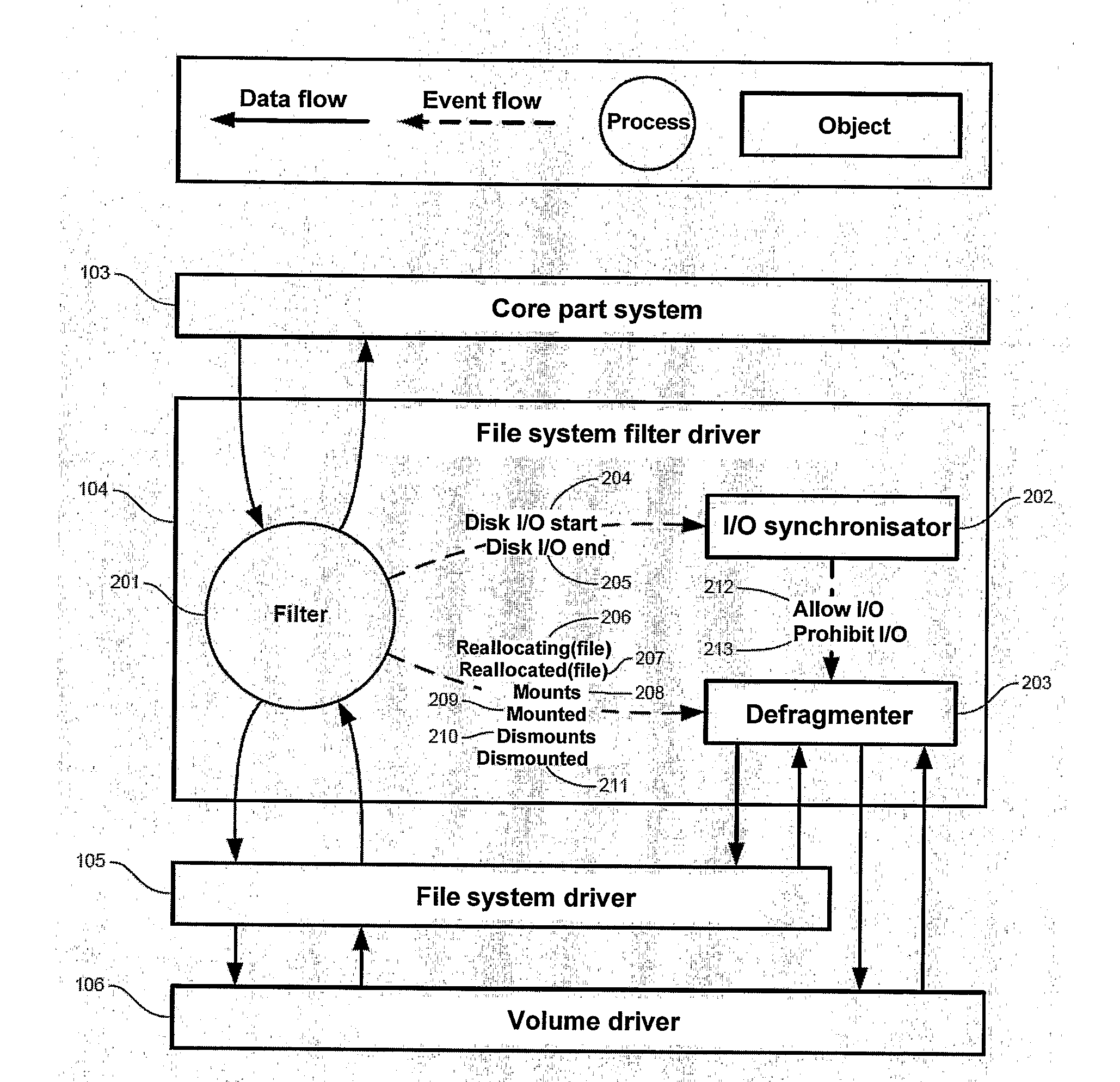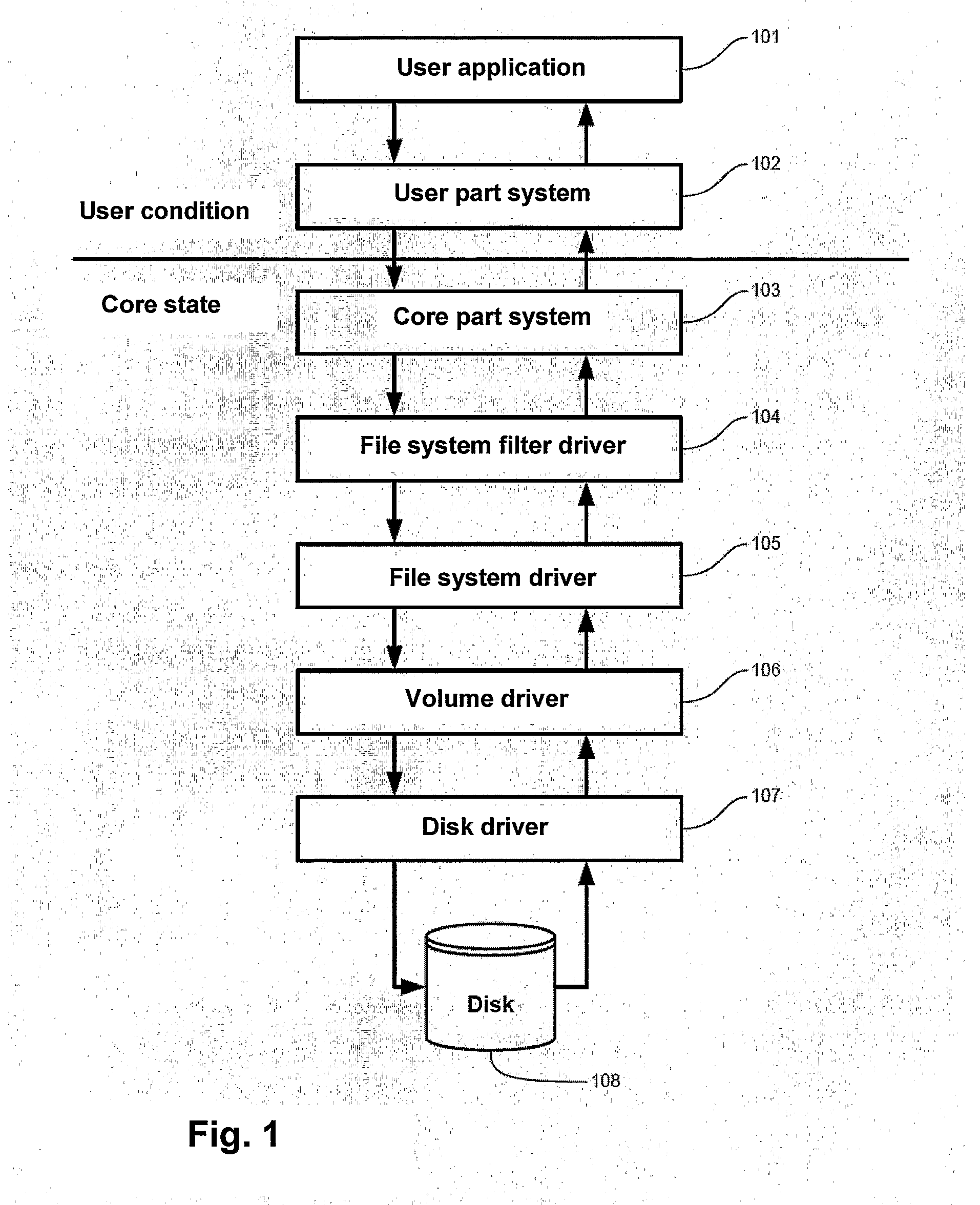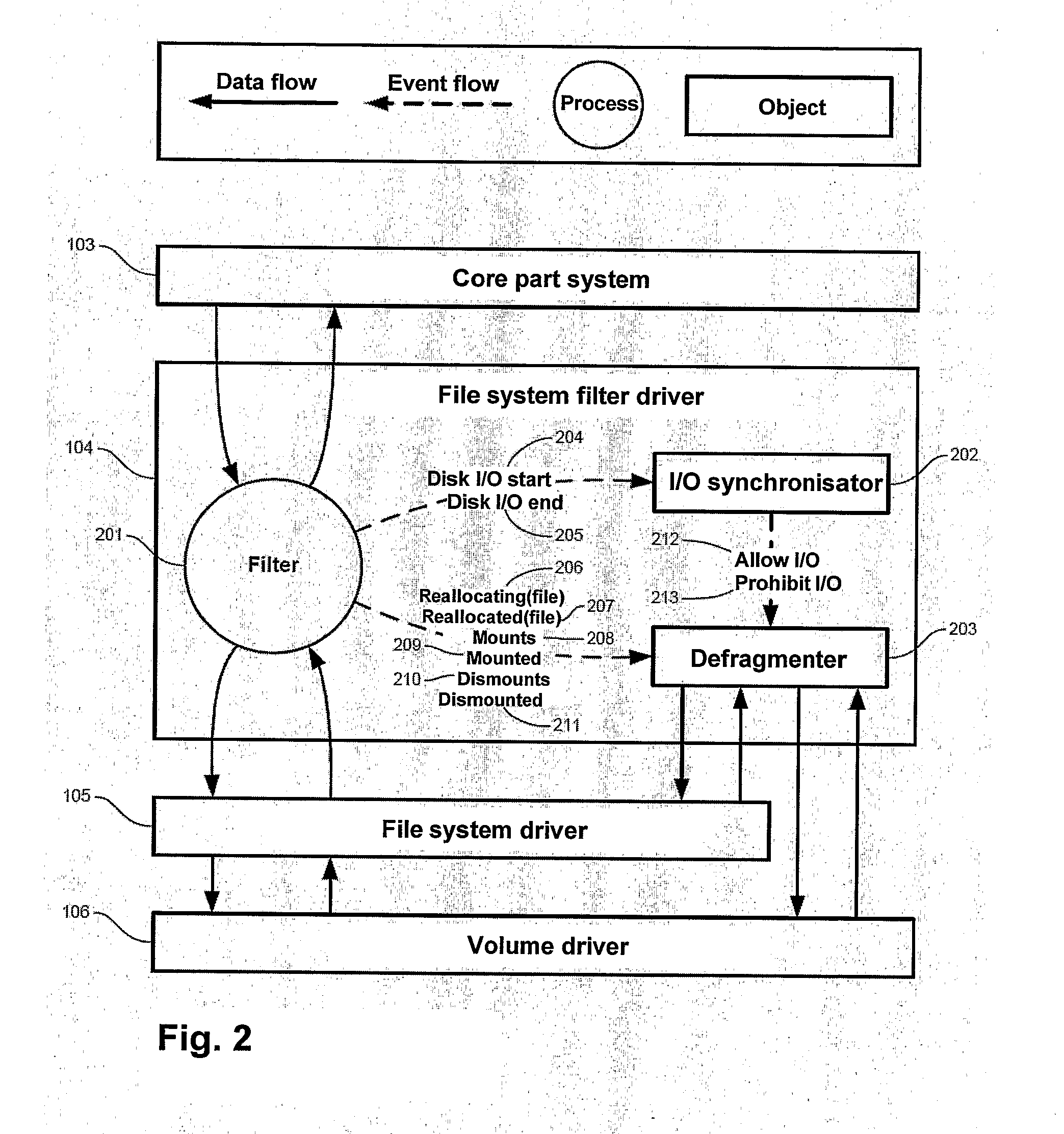Defragmentation of digital storage media
- Summary
- Abstract
- Description
- Claims
- Application Information
AI Technical Summary
Benefits of technology
Problems solved by technology
Method used
Image
Examples
examples of embodiments
[0051]In the following, examples of possible realisations of the invention are given.
[0052]The first example demonstrates how files that are fragmented in a running system may be defragmented in the background without slowing running processes. The example does not include defragmentation of system files. It has its origin in the architecture shown in FIG. 2. It demonstrates a possible behaviour of the three primary components of the invention: Filter (201), I / O-Synchronisator (202) and Defragmenter (203). FIG. 3 shows behaviour of Filter (201) in a flowchart, FIG. 4 the behaviour of I / O-Synkronisator (202) in a state diagram, and FIG. 5 the behaviour of Defragmenter (203) in a state diagram.
[0053]FIG. 3 is an example of an algorithm for filtering I / O requests from the core part system (103) to the filter system driver (105) in Filter (201). The flowchart is completed from start to end for each filtered I / O request to the file system driver (105). Only non-cached-file-I / O (301) is r...
PUM
 Login to View More
Login to View More Abstract
Description
Claims
Application Information
 Login to View More
Login to View More - R&D
- Intellectual Property
- Life Sciences
- Materials
- Tech Scout
- Unparalleled Data Quality
- Higher Quality Content
- 60% Fewer Hallucinations
Browse by: Latest US Patents, China's latest patents, Technical Efficacy Thesaurus, Application Domain, Technology Topic, Popular Technical Reports.
© 2025 PatSnap. All rights reserved.Legal|Privacy policy|Modern Slavery Act Transparency Statement|Sitemap|About US| Contact US: help@patsnap.com



